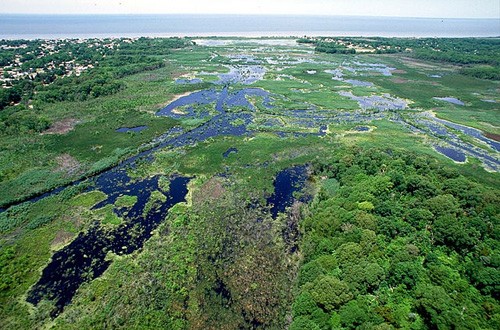Understanding microbe communities could improve wetland wastewater treatment systems
COLUMBIA, Mo. – Wetlands serve as the Earth’s kidneys. They filter and clean people’s water supplies while serving as important habitat for many species, including iconic species like cattails, cranes and alligators. Conventional ecosystem health assessments have focused on populations of these larger species. However, the tiny, unseen creatures in the wetlands provided crucial indicators of the ecosystems’ health in a study by University of Missouri Associate Professor of Engineering Zhiqiang Hu and his team. Using analysis of the microbiological health of wetlands is cheaper and faster than traditional assessments, and could lead to improvements in harnessing natural processes to filter humans’ wastewater.
“During road and building construction, engineers must sacrifice wetlands to development, but laws dictate that these lost wetlands be compensated for by establishing a wetland somewhere else,” said Hu. “Our research could be applied to both monitor the success of these compensation wetlands and guide conservationists in inoculating new engineered ecosystems with the correct types of microorganisms.”
Understanding the microbial biodiversity of a healthy wetland also informs engineers’ decisions when building constructed wetlands or wastewater treatment ponds, according to Hu. These systems can help clean water flowing from sewer lines and reduce the need for expensive treatment plants.

The tiny, unseen creatures in the wetlands provided crucial indicators of the ecosystems’ health in a study by University of Missouri Associate Professor of Engineering Zhiqiang Hu and his team. Image credit: University of Missouri
“Microbes form the base of the wetland food chain and nutrient cycle, so the health of their populations reverberates through the ecosystem,” said Hu. “However, analyzing their populations was once too difficult. Now, advances in microbial analysis allow us to more easily and accurately identify the species present in soil or water samples. This could become a vital tool to complement other forms of wetland health evaluation.”
Hu’s team, led by former MU doctoral student Atreyee Sims, found that a higher ratio of certain microbes, known as archaea, to bacteria was a good sign of a healthy ecosystem. When a few species of bacteria dominated the samples, the wetland was probably contaminated and unhealthy from the ground up, Sims concluded.
The study “Toward development of microbial indicators for wetland assessment” was published in the journal Water Research.
*Source: University of Missouri

